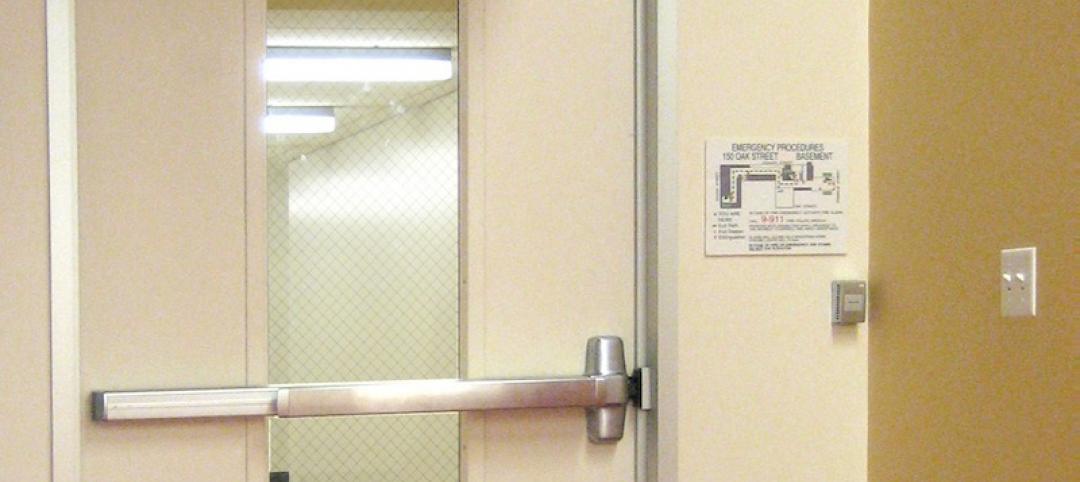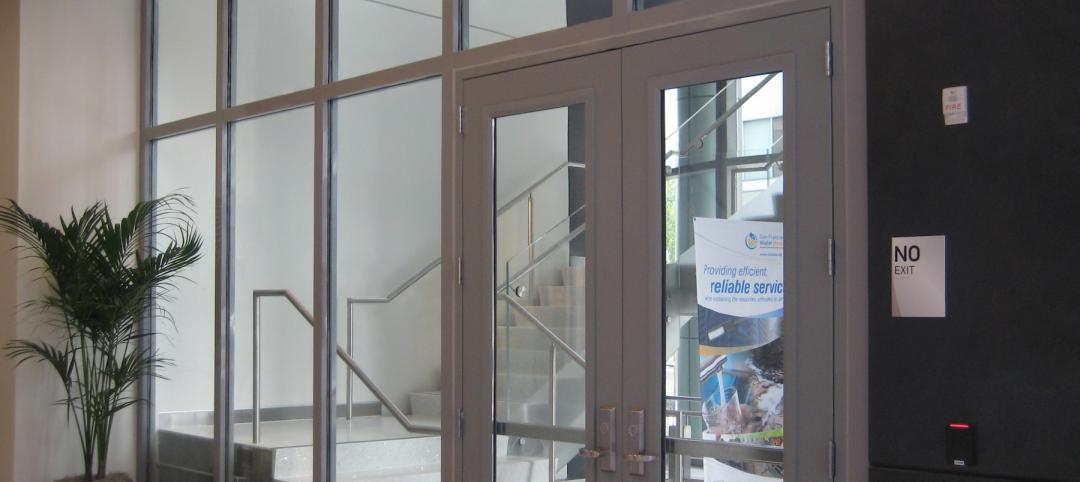Schaumburg, Ill. -- Coursework is now available through the AAMA FenestrationMasters™ professional certification program, which was launched last year by the American Architectural Manufacturers Association (AAMA). This nationwide program is targeted to professionals in the window, door, skylight, curtain wall, storefront and sloped glazing industries. The FenestrationMasters program offers training content based on consensus-based AAMA standards.
The coursework can be used for the purpose of training new hires, as an introduction to the fenestration industry or to provide further education, instruction and training to current employees. The broad scope of the coursework provides an introduction to the industry, as well as an education in a range of topics affecting the commercial and residential building products market segments.
Rich Walker, AAMA's president and CEO, states, “Additional education and certification is an effective way to ensure that employees are well-trained and knowledgeable, which puts companies in a strong position to compete for business by offering customers the benefit of a well-trained staff with a broad knowledge base.”
The program coursework covers a wide range of subjects, including performance standards, product and material types and code requirements. Coursework is accessed through MyWindowClass.com, which is owned and operated by the National Glass Association. The online education format allows professionals to complete the coursework at their own pace and convenience, simply through access to any computer with an Internet connection. There are two different credentials available through the program:
* Certified FenestrationMaster: To qualify for advanced certification, a four-year degree in engineering, architecture or applied sciences in addition to four years of full-time fenestration-related experience or six years of full-time experience is required. This credential requires completion of six levels of coursework and a certification exam.
* Certified FenestrationAssociate: To qualify for entry-level certification, a four-year degree and 1 year of full-time fenestration-related experience is required or three years of full-time fenestration-related experience. This credential requires completion of four levels of coursework and a certification exam.
Descriptions for currently available courses within levels 1 and 2 are outlined below.
Level 1
* Specifying Windows and Doors: Part I: History & Features
The evolution of window and door standards and code references and introduces AAMA/WDMA/CSA 101/I.S.2/A440-08, NAFS - North American Fenestration Standard/Specification for windows, doors, and skylights (the jointly published industry standard that is applicable for use in testing and rating fenestration products)
* Specifying Windows and Doors: Part II: Basic Performance Requirements
Basic performance requirements outlined in AAMA/WDMA/CSA 101/I.S.2/A440-08, NAFS - North American Fenestration Standard/Specification for windows, doors, and skylights and performance considerations, including structural loading, water penetration and air infiltration
* Specifying Windows and Doors: Part III: Window Testing
Testing requirements for windows, including minimum test sizes and other special and optional test requirements
* Specifying Windows and Doors: Part IV: Requirements for Materials and Exterior Side-Hinged Doors
The framing materials requirements dictated by AAMA/WDMA/CSA 101/I.S.2/A440-08, NAFS - North American Fenestration Standard/Specification for windows, doors, and skylights, as well as performance requirements for exterior side-hinged doors
* Specifying Windows and Doors: Part V: Verifying Performance through Certification
The importance of product certification and the role that certification plays in verifying quality and performance
* Glass Functionality, Performance, and Types
The uses and functionality of glass in commercial buildings, as well as manufacturing and fabrication processes for different types of glass and the applications for these products
* Fabricated Glass Solutions
Various kinds of fabricated glass solutions to enhance basic glass performance, including insulating units, safety glass and fire-rated glass, as well as methods of measuring and evaluating glass performance in order to make informed glass choices
* Installation Design Considerations
This course was developed as part of the InstallationMasters™ curriculum, and covers design considerations for both windows and doors.
* Types of Windows
This course was developed as part of the InstallationMasters curriculum, and covers all types of windows.
* Types of Exterior Glass Doors
This course was developed as part of the InstallationMasters curriculum, and covers hinged glass doors, dual action hinged glass doors and sliding glass doors.
Level 2
* Air and Water Leakage Resistance Testing: Part I
Comparison of AAMA/WDMA/CSA 101/I.S.2/A440-08, NAFS - North American Fenestration Standard/Specification for windows, doors, and skylights to the field testing documents (AAMA 502, 503 and 511) to define the appropriate water test pressure, test durations and water application necessary for a successful forensic water test
* Air and Water Leakage Resistance Testing: Part II
Evaluation of case studies, as well as procedural information on recreating the leak during a forensic water test
For more information regarding the FenestrationMasters program visit www.aamanet.org/FenestrationMasters. More information about AAMA and its activities can be found at www.aamanet.org.
Related Stories
| Jul 24, 2014
Glazing options in correctional and detention facilities
Like it or not, the number of incarcerated people in the U.S. continues to rise. With that, increased security in all aspects of these facilities continues to be a priority. This is where security glazing products that allow line of sight for supervisors to observe and still maintain secure separation can play a key role. SPONSORED CONTENT
| Jul 14, 2014
Foster + Partners unveils triple-glazed tower for RMK headquarters
The London-based firm unveiled plans for the Russian Copper Company's headquarters in Yekaterinburg.
| Jul 7, 2014
5 factors that can affect thermal stress break risk of insulated glass units
The glass type, glass coating, shading patterns, vents, and framing system can impact an IGU’s risk for a thermal break.
Sponsored | | Jul 7, 2014
Channel glass illuminates science at the University of San Francisco
The University of San Francisco’s new John Lo Schiavo Center for Science and Innovation brings science to the forefront of academic life. Its glossy, three-story exterior invites students into the facility, and then flows sleekly down into the hillside where below-grade laboratories and classrooms make efficient use of space on the landlocked campus.
Sponsored | | Jun 27, 2014
SAFTI FIRST Now Offers GPX Framing with Sunshade Connectors
For the Doolittle Maintenance Facility, SAFTI FIRST provided 60 minute, fire resistive wall openings in the exterior using SuperLite II-XL 60 insulated with low-e glazing in GPX Framing with a clear anodized finish.
| May 28, 2014
KPF's dual towers in Turkey will incorporate motifs, symbols of Ottoman Empire
The two-building headquarters for Turkey’s largest and oldest financial institution, Ziraat Bank, is inspired by the country’s cultural heritage.
| May 20, 2014
Kinetic Architecture: New book explores innovations in active façades
The book, co-authored by Arup's Russell Fortmeyer, illustrates the various ways architects, consultants, and engineers approach energy and comfort by manipulating air, water, and light through the layers of passive and active building envelope systems.
| May 5, 2014
Tragic wired glass injury makes headlines yet again
In the story, a high school student pushed open a hallway door glazed with wired glass. His arm not only broke the glass, but penetrated it, causing severe injuries. SPONSORED CONTENT
Sponsored | | May 3, 2014
Fire-rated glass floor system captures light in science and engineering infill
In implementing Northwestern University’s Engineering Life Sciences infill design, Flad Architects faced the challenge of ensuring adequate, balanced light given the adjacent, existing building wings. To allow for light penetration from the fifth floor to the ground floor, the design team desired a large, central atrium. One potential setback with drawing light through the atrium was meeting fire and life safety codes.
| Apr 25, 2014
Recent NFPA 80 updates clarify fire rated applications
Code confusion has led to misapplications of fire rated glass and framing, which can have dangerous and/or expensive results. Two recent NFPA 80 revisions help clarify the confusion. SPONSORED CONTENT
















